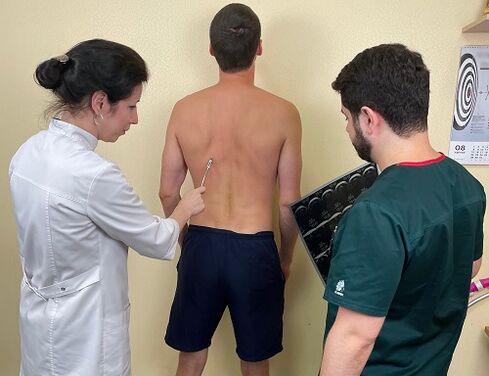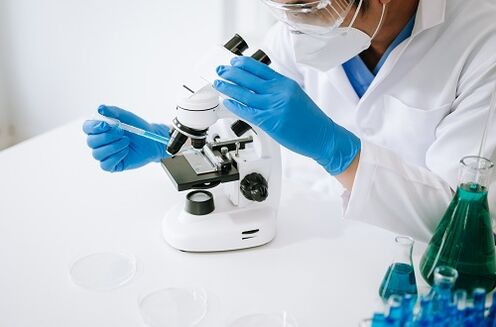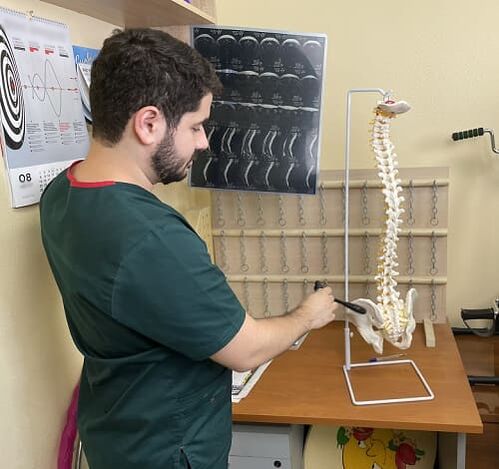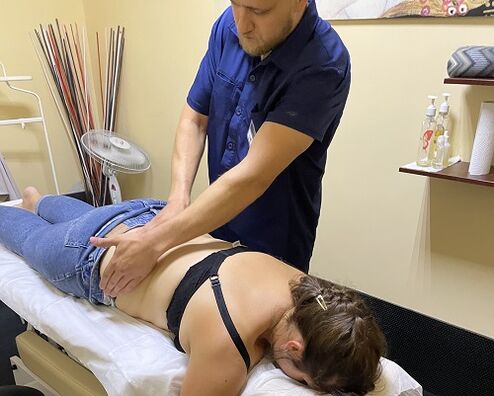
Osteochondrosis of the cervical spine today is common among city dwellers, office workers and people who spend several hours a day in one position.
But it can also develop among young people. Therefore, everyone should know what cervical osteochondrosis is and how it is treated in order to seek help in time and stop the development of unpleasant symptoms and destruction of the neck and shoulder joints.
Before deciding what to do if osteochondrosis of the cervical spine worsens and pain is felt in the neck, you should consult a doctor and undergo diagnosis.

Diagnostic
Is it possible to permanently cure osteochondrosis of the cervical spine, is it possible to treat the neck and how to carry it out, the doctor will tell you after a comprehensive diagnosis. Due to the similarity of symptoms with other diseases, special attention is paid to determining the diagnosis. A patient who consults a neurologist with complaints of neck pain and dizziness will have to go through several stages before developing a complex therapy for him.
Inspection
During the first visit to the neurologist, an initial examination of the patient is carried out. The task of the doctor is to determine the diagnosis, the possible cause of the appearance and development of the disease, as well as to exclude other diseases with similar symptoms.
Specialist during inspection:
- Listen to health complaints. Clarifies symptoms, frequency, intensity. Try to determine what triggers the attack to begin.
- Clarify the details of the history,will determine the characteristics of the patient's daily life and the presence of concomitant diseases.
- Checks the functioning of reflexes,focusing on those whose work is influenced by nerve endings located in the neck.
- Examines muscle strength and sensitivity,will identify areas of numbness or a tendency to spasm or excessive relaxation.
- Will drivetest of the vestibular apparatus,which is also affected by the development of osteochondrosis.
During the process, the doctor examines the condition of the muscles. Their thinness or swelling suggests problems with nerve sensitivity. Another important symptom is pain and dizziness when turning or tilting the head.
Laboratory diagnosis

It is possible to prescribe an error-free treatment regimen during an exacerbation of cervical osteochondrosis and provide effective assistance only by identifying the causes of destruction of the vertebra and intervertebral discs. And for this, additional research is carried out in the laboratory.
To understand the evolution of the disease, several studies are carried out:
- Total and ionized calcium.
- Osteocalcin and osteoprotegerin– substances – indicators of the progressive destruction of bones and thinning of cartilage tissue. If their amount in the blood is higher than normal, the disease will continue to develop.
- Creatine kinase– an indicator of muscle tissue damage. If osteochondrosis has already caused the development of myositis and seriously threatens the muscles, this indicator in the blood will also be increased.
- Research on microelements and vitaminsis carried out to determine which microelements and vitamins necessary for metabolism and tissue repair are missing in the patient's body.
Instrumental studies
Having found out the rate of development and causes of chondrosis, the doctor must determine the condition in which the patient was admitted.
For this purpose, material studies of the spine and intervertebral discs are carried out:
- X-ray.Shows serious changes in bone structure, deformities and emerging neoplasms.
- Magnetic resonance imagingevaluates the condition of nerve roots, bulging discs, spinal inversions and small tumors.
- Ultrasound of cervical blood vesselsthe analysis of blood vessels is carried out to determine their permeability, and therefore their ability to provide the brain with the necessary oxygen and nutrients.
- Electroneuromyography. A current charge passes through the nervous system, which is unpleasant, but shows the level of passage of nerve impulses and the speed of their passage to the muscles, and therefore the degree of damage.

There are many tips on how to permanently get rid of cervical osteochondrosis, quickly relieve pain, eliminate dizziness and combat attacks of weakness at home. But it should be understood that this is a serious disease that develops individually, and therefore the treatment regimen should be chosen by a professional. Therefore, as soon as the first symptoms appear, without wasting time with traditional methods, you should contact the clinic.
Treatment
Almost everyone who has been diagnosed with "chondrosis of the cervical spine" has thought about how to cure the degenerative disease, whether it can be treated and how, and whether it is possible to forget about neck pain foreverif we follow the advice of doctors. The answer depends on the stage.
In the first and second stages, there are methods that allow treating chondrosis of the cervical spine in men and women with good results for the neck at home.
The doctor's goal is to relieve pain, avoid further destruction of cartilage and bone tissue and try to restore, if possible, the intervertebral discs to regain mobility. To solve this problem, complex therapy is always used, but sometimes surgical intervention is added to conservative treatment methods.
Medical treatment
Very often, men and women, faced with the stage of exacerbation of inflammation due to osteochondrosis of the cervical spine, choose home treatment, using a strong pain reliever, but what to do if neck pain reappears, what treatment will be effective? The only correct answer is the appointment of a neurologist.
When chondrosis worsens, it is important not only to eliminate the symptoms, but also to cure what provokes them, and therefore the range of drugs is not limited to painkillers.For the treatment of cervical osteochondrosis, the following are used:
- Non-steroidal anti-inflammatories,helping to relieve pain and reduce tissue inflammation at pinched nerve endings.
- Local gels and ointments,which must be prescribed by a doctor, as not all are compatible with medications taken orally.
- Muscle relaxerswill allow you to relax spasmed muscles and release pinched nerves and arteries, get rid of stiffness, pain and dizziness.
- Chondroprotectorsare used to stop the destruction and restore the cartilaginous tissue of the intervertebral discs, and prevent the appearance of hernias.
- Vitamin complexesare used to improve tissue nutrition, accelerate their recovery and enhance the effect of drugs, allowing the use of lower doses.
If a patient is admitted with unbearable pain, a blockade based on hormonal analgesics will be used.

Non-drug treatment
Another method that has excellent reviews from both men and women and is often used in the treatment of osteochondrosis of the cervical spine and shoulder girdle at home is physical therapy, but how and withwhat to treat should also be decided by the doctor. After all, there are no universal methods of physiotherapy that suit everyone. A set of effective methods is selected specifically for each patient.
The most effective are considered:
- Electrophoresis with painkillers.
- Physiotherapy. The set of exercises and their complexity vary depending on the stage of development of osteochondrosis.
- Massage and self-massage.
- Magnetotherapy.
Surgery for osteochondrosis
At certain stages of the development of cervical osteochondrosis, what is prescribed to relieve neck and back pain does not help, in which case you can take heavier medications or resort to a radical but effective method - surgery. The operation is prescribed for patients with irreversible changes in the structure of the spine. At the same time, the collapsed and fused vertebrae, hernias and neoplasms that appear threaten human life and reduce its quality.

The surgeon will be able to remove bony growths, hernias, tumors and pinched nerve endings. After such an intervention, the patient will undergo rehabilitation, during which it will be necessary to follow the doctor's recommendations, otherwise even the operation will not bring the desired effect.
How and how to treat cervical chondrosis at home or in the hospital, what to do to relieve neck and shoulder pain, get rid of dizziness and relieve inflammation of the vertebrae, what helps and what will harm, itIt is the doctor who must decide. Using other methods and means, you risk your health, because with such a disease, therapy should be built taking into account the personal characteristics of the patient.
Prevention
In order not to know what the treatment of cervical osteochondrosis is, you need to think about prevention in advance. The disease is often hereditary, but following the recommendations will help prevent its development or stop it in its early stages.
Traditional preventive measures for spinal diseases:
- Ensure healthy physical activity. Light workouts 2-3 times a week. It is worth choosing a sport aimed at strengthening the muscular corset. Swimming, yoga, Pilates, cycling, skating are suitable. In this case, the loads should not be too heavy.
- Daily activity even during sedentary work. To do this, simply do exercises and take walks.
- Watch your posture, not only when walking, but also when working.
- An ergonomic workstation in which the space that occupies attention is located so that the neck is not strained.
- Avoid heavy lifting and excessive exercise.
- Provide a comfortable sleeping place with an orthopedic mattress and pillows so that sleep is healthy and brings complete rest.
- Give up bad habits, because alcohol, nicotine and drugs have an extremely negative effect on joints, bones and blood vessels.
- Change your diet. It is worth reducing the amount of salt, spices, sugar and flour consumed in the daily menu. Avoid fast foods, especially those cooked in oil, sugary sodas and fruit juices.
- Make a menu taking into account the needs for microelements and vitamins. Pay attention to lean vegetables and fruits, fish and meat.
- Drink plenty of clean water.
- Once every few months, perform a course of maintenance massage. Do a regular self-massage if you feel tired in your shoulders.
If, despite all attempts to maintain health, osteochondrosis of the cervical spine appears, only a doctor can determine how long the disease will be treated after a thorough diagnosis. However, in order to prevent the recurrence of an exacerbation, a person with such a diagnosis will have to remember the rules of healthy living throughout his life.

























